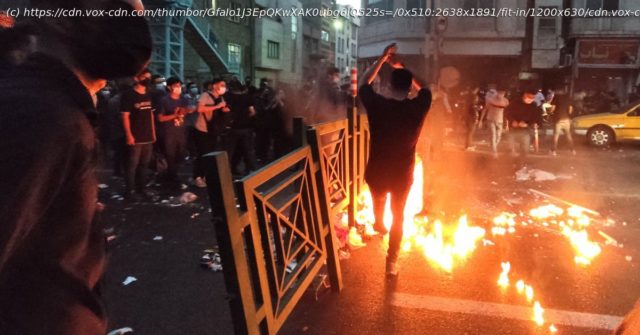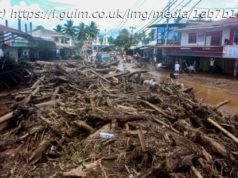Censorship, trolls, and bots: The information war distorting Iran’s protests.
Protesters in Iran have been resisting the government there for over two months, in response to the death of the young woman Mahsa Amini in police custody. Since September, more than 18,000 Iranians have been arrested, among them at least 70 journalists. Close to 500 protesters have been killed.
But at times, it’s been difficult for news outlets and newsmakers to convey the complete picture of the emerging protest movement and its aftershocks.
Last weekend, US newspapers sent news alerts about Iran abolishing its so-called morality police, the authority that had arrested Amini in September. But that wasn’t the full story, and US outlets quickly reframed what was initially a definitive news article. Iran’s state media said comments from Iran’s attorney general had been misinterpreted. It was more of a sign of the stress that the regime is under, perhaps, than a policy change.
This comes after a false report circulated in mid-November that Iran would execute 15,000 of the protesters. It was later debunked, but not until after it became a meme shared by influential posters. Canadian Prime Minister Justin Trudeau even tweeted it out.
And though not as extreme, the New Yorker’s first article on the protests in late September said that exiled activist Masih Alinejad was leading the protests. She has indeed come under attack from Iranian intelligence agents, but many observers disputed the idea that the New York-based Voice of America journalist played a key role. “Today, few of the young people on the streets of Iran’s cities and towns are saying Alinejad’s name,” Brandeis professor Naghmeh Sohrabi wrote in a letter to the magazine.
Why is this such a difficult set of political developments to make sense of?
In a severely restricted country with limited press freedoms, the information environment is poor and prone to exploitation. The protests defying the government are horizontal and leaderless, with Iranians agitating not for reforms but for fundamental change. These are strengths in many ways, but also structural conditions that can impair a clear presentation of what’s happening in Iran.
And then there are the groups deliberately trying to shape (or misshape) the story. As protesters in Iran counter a brutal regime, online battles are unfolding among the diaspora. More sinisterly, Iranian American journalists have seen a wave of online attacks that look like a coordinated influence campaign, and Iranian government–linked hackers have baited journalists and experts.
Internet researchers say the inorganic online activity around these protests is unprecedented.
“I’ve not seen something of this scale before,” Marc Owen Jones, a professor and author of Digital Authoritarianism in the Middle East, told me. Some 330 million tweets on the Mahsa Amini hashtag in Persian were sent — in one month, he said. “By way of comparison, #BlackLivesMatter over eight years got about 83 million. And since February, the word #Ukraine has been mentioned 240 million times,” he added. It renders the hashtag useless for news consumers looking for real-time analysis of what’s happening.
Despite all those bots and troll armies, powerful videos of anti-government resistance continue to reach our feeds. The focus needs to remain on accountability for the Iranian protesters who have died and their impetus for protesting in the first place. The information flow from a highly restricted Iran
With a lack of press freedom in Iran, knowledge of the country is hampered. Getting it out of the country is even harder.
The Western press was on the scene during the 2009 protests, but just a handful of foreign news agencies continue to work on the ground.






